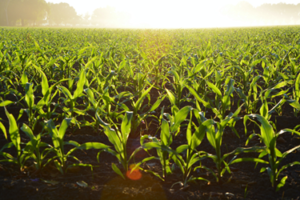Anyone in the agricultural industry knows that they deal in very high-risk commodities. After all, farming involves cultivating living things, often in potentially hazardous conditions. You have to protect your products as best you can, and if you deal in crops of any kind, you know how challenging this endeavor can be simply from day-to-day.
Your crops are your livelihood, and even a bad harvest could put you in dire financial straits. A devastating accident (even one that you could never have prevented) could go even further; it could be an instantaneous disaster that ruins your crops and makes your recovery a very uncertain prospect. Don’t put your long-term survival on the line just trying to recover from a crop loss scenario. Instead, invest in quality crop insurance that will be there to help you out in case of these challenges.
Crop insurance is property coverage that is very specific to agricultural producers. You can use this coverage to your advantage in numerous ways, and your agent is happy to work with you to optimize your specific benefits. In the end, this coverage can go a long way towards stabilizing your farming operations even after a massive crop loss occurs.
What is crop insurance?
To any farmer, crops are products or commodities that, at the end of the day, equal money earned or lost. After all, it is your produce that feeds the community, puts food on your own table, and helps you support your own lifestyle.
However, raising crops means cultivating life in one of its most vulnerable forms, and you have an obligation to deliver quality, fresh and safe products to consumers. Therefore, you have to do all you can to protect your crops from loss, damage, or contamination. It’s an unfortunate fact, however, that you often can’t eliminate the risk that something might go wrong from time to time.
At its simplest, crop insurance is property insurance that provides compensation to the farmer if crops are lost or destroyed due to unexpected, unavoidable incidents. Crops might be covered when they are damaged by:
- Fire
- Wind
- Hail
- Lightning
- Smoke
- Theft
- Vandalism
- Drought
- Certain Pest or Environmental Contamination
- Disease
Your policy will offer coverage that can help you replace the lost crops, primarily. However, it can also offer you income replacement coverage. If you have to stop production, then you could lose significant revenue streams until your crop yield has had time to recover. The income replacement portion of your policy will offer you restitution for those losses.
The different types of crop insurance benefits.
Because both the U.S. agricultural and insurance industries are highly regulated, crop insurance policies and providers are subject to various coverage mandates as set by law.
Not all crop insurance policies are created equal and for good reason. After all, you want your policy to be as personally beneficial to your operation as possible. To get the right plan will mean comparing policies to see which different included perks are best for your operation.
There are two main types of crop insurance policies:
- Crop-Hail Policies: Hail is often the hazard that will do the most significant and present damage to your crops. Crop-hail policies are a limited form of coverage designed only to protect you against hail damage, specifically. May be purchased through a private insurer at any point in the season.
- Multiple (Multi-) Peril Crop Insurance: These policies are only available at select insurers through the Federal Crop Insurance Program, which regulates the crop insurance market across the country. This policy covers numerous types of crops against a range of threats, such as excessive moisture and freezes. This insurance must be purchased before the crops are planted, and it is only available to be purchased at certain times of the year.
Generally, multi-peril policies are best for larger farms that deal in various crops and have a strong business interest in their yield’s survival. This coverage is much more comprehensive and will be better equipped to assist you in the event of a massive growth in
When you have to file a claim, you will contact your insurance provider, who will send an underwriter to investigate. Once the claim is approved, you will receive compensation for crops that have been lost or damaged, and you may receive temporary revenue assistance.
What does crop insurance cost?
Like all insurance policies, crop insurance will come at a cost, and plans are generally priced by the acre. However, various factors might influence your precise premium, including the:
- Location of the farm
- Size of the property and your crop yield
- Type of crops being grown
- Harvesting season
It is important to be upfront with your agent about your goals for your operations. Ensure that they know the size and value of your production, and exactly what you will lose if crops get destroyed.
No matter what you grow or where you grow it, crop insurance can protect your agricultural business from heavy financial loss. Calculate the value of your crops and don’t hesitate to work with your agent to find the right benefits.



